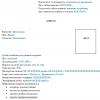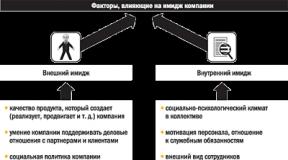Creon 10,000 for newborns. Creon for children: instructions and application features for each age. Creon during pregnancy and lactation
The composition of the drug Creon 10,000, 25,000 and 40,000 includes the main component:.
Additional components: , liquid paraffin, methylhydroxypropylcellulose phthalate, dibutyl phthalate, dimethicone 1000 , iron oxide red, black and yellow, gelatin and titanium dioxide.
Release form
Creon 10,000, 25,000 and 40,000 are produced in capsule form. In this case, the capsules are packaged in blisters of 10 or 25 pieces or in bottles of 20 or 50 pieces. Blisters can be packed in packs of 2 or 4 each.
pharmachologic effect
This drug is able to compensate for the deficiency in the pancreas.
Pharmacodynamics
This enzyme preparation, as indicated by Wikipedia, is intended to improve digestive processes. The pancreatic enzymes included in its composition contribute to the breakdown of proteins, fats and carbohydrates, leading to complete absorption into small intestine... The main substance pancreatin is also the INN of the drug.
As the annotation reports, the capsule shell dissolves easily in the stomach, resulting in the release of many mini-microspheres. Thus, the mini-microspheres are mixed with the intestinal contents, improving the distribution of enzymes within the intestine.
Indications for the use of Creon
The main indications for use are:
- substitution treatment for insufficient exocrine pancreatic function accompanying the disease - cystic fibrosis, pancreatectomy, pancreatic cancer, obstruction of the gastrointestinal tract ducts in neoplasms, Shwachman-Diamond syndrome, as well as in elderly patients;
- symptomatic treatment of disorders of digestive processes with partial resection of the stomach, total gastrectomy, biliary obstruction, cholestatic hepatitis , pathologies of the terminal section and excessive bacterial growth in the small intestine.
Contraindications
Kreon is not prescribed for:
- acute form;
- high sensitivity to the drug;
- exacerbations of chronic pancreatitis.
Side effects
The use of the drug causes side effects only in rare cases. This can manifest itself: , gastrointestinal discomfort, nausea .
Creon capsules, application instruction (Way and dosage)
Instructions for use Creon 10000 recommends prescribing them to young patients. In general, this drug of any amount of IU is taken orally. The selection of the dosage is carried out individually and depends on the age, severity of the disease and the type. It is usually recommended to take the medicine partly before meals and the rest with food.
At the beginning of treatment, tablets are prescribed in a dosage of 10,000-25,000 units. When it is necessary to reduce steatorrhea and maintain the patient's optimal condition, the dose may be increased. In medical practice, patients can receive an average of 20,000–50,000 IU of EF lipase.
During the treatment of cystic fibrosis, the dosage is set depending on the weight. For example, when treating small patients under 4 years of age, 1000 lipase units per kg of weight are prescribed, and over 4 years of age, 500 lipase units per kg of weight with each meal. For many patients, the daily dosage should not exceed 10,000 IU per 1 kg of body weight.
Instructions for use Creon 25000 recommends taking it in the treatment of other conditions that may be accompanied by exocrine pancreatic insufficiency. In this case, the dose is set, taking into account the individual characteristics of the patient, for example, how much digestion is impaired, how much fat is contained in food, and so on.
Instructions for using Creon for children contain detailed description how to give to children with difficulty swallowing. To use this medication for children, the capsules are carefully opened. The internal contents are mixed with liquid or food that does not require chewing. It must be remembered that such mixtures cannot be stored, therefore, they are taken immediately after they are prepared. It is forbidden to grind or chew mini-microspheres and add them to acidic foods - this can destroy their shell, which protects against the effects of gastric juice.
Instructions for use Creon 40,000 recommends taking this drug for adult patients. Its dosage also depends on the severity of the disease and the personal characteristics of the patient. The duration of use must be established by the attending physician.
Overdose
In cases of overdose, it develops hyperuricuria or hyperuricemia.
Eliminate their manifestation allows the abolition of the drug and the conduct of symptomatic therapy.
Interaction
Drug interactions with other drugs have not been established.
special instructions
There have been cases when patients in the treatment of cystic fibrosis received pancreatin in high dosages, which caused colitis, strictures of the cecum and ileum.
For this reason, the dose must be controlled, especially when Creon 40,000 is prescribed. It is also necessary to monitor the appearance of any symptoms and changes that occur in abdominal cavity... In addition, you should immediately find out how to take Creon for 10,000 adult patients and not exceed its dosage.
Terms of sale
Without recipe.
Storage conditions
Storage of capsules is permissible when room temperature, out of the reach of children.
Best before date
Creon during pregnancy and lactation
Data on how safe it is to take the drug Creon with and , absent. This applies in general to any enzymes of the pancreas. Therefore, the use of the drug is permissible only when the expected benefit from the treatment for the mother significantly exceeds the likely danger to the fetus or baby.
Creon for children
An enzyme preparation is prescribed for children when it is necessary to improve digestion. The recommended daily dosage of Creon 10000 for children is divided into several parts and taken with each meal.
When prescribing it, parents need to immediately find out with a doctor how to take Creon for children, since the dose is prescribed taking into account the weight of the baby.
It should be noted that the reviews for the child are very ambiguous. Some mothers report the effectiveness of capsules, but there are also reviews about the uselessness of this medication.
Creon for babies
When this drug is prescribed to babies, many parents immediately have questions: what is Creon and what is it taken from? It is known that the organs of the gastrointestinal tract of newborns are formed over a certain period of time. Therefore, even small deviations in the diet for infants can cause a violation.
Also, mothers start to worry, how to give the baby medicine in capsules? In fact, the pediatrician explains all this in detail and describes the instructions for the drug. It should be noted that Creon 10,000 is usually prescribed for newborns, indicating the dosage, regimen and duration of therapy.
The reasons for prescribing capsules for newborns are:
- persistent colic;
- or diarrhea with particles of undigested products;
By the way, parents' reviews show that the question of how to give this medicine to a baby is not a problem at all. Many mothers are confused by the effect of the drug, since its effectiveness is not always manifested.
Creon's analogs
Matching ATX level 4 code:The main analogues of Creon 10000 and other units: , Gastenorm, PanziKam, ... However, this does not mean that each of them is an equivalent substitute.
It should be noted that the price of analogs can be very different and cannot be inclined towards the purchase of one or another drug. The question of what can replace the treatment should be clarified with the doctor. Especially when the medicine is selected for children under one year of age.
Creon or Pancreatin - which is better?
Despite many similarities, each of these drugs has significant differences. But if you know what the difference is, then you can do right choice when buying a medicine.
If we compare how Creon differs from, then the first is the release form. Pancreatin is available in tablets. The second difference is the concentration of the active substance, which in Pancreatin is presented in an arbitrary content.
The effect of drugs is also not the same - Pancreatin already acts in the stomach and therefore does not fulfill its function completely, therefore it is considered less effective. Although its cost is much lower.
Thus, based on these data, each patient will be able to make a decision which drug to choose.
Hermital or Creon - which is better?
The formulations of these drugs are quite similar, but less effective due to the type active substance... Creon's mini-microgranules mix easily with the contents of the stomach, significantly improving physiological digestion, while other products have a somewhat delayed effect.
Which is better - Creon or Micrasim?
These funds are almost identical in everything, but they differ in the dosages of their components.
For example, contains 320 mg of pancreatin. In addition, it is a domestically produced medicine and is cheaper.
Therefore, when prescribing this drug, it is important to take into account the high content of the enzyme, since such a difference is tangible and can lead to complications in the work of the digestive tract.
Creon or Panzinorm - which is better?
Another absolute analogue is. It is produced by the KRKA brand from Slovenia. This medicine is also used in the treatment of enzyme deficiency.
It is believed that each of them has the same effectiveness, and which drug is suitable for treatment, you need to choose yourself, but still on the recommendation of a doctor.
Reviews about Creon
This drug is quite popular and is discussed on various forums. Especially often there are reviews about Creon 10000, which is prescribed for young children suffering from digestive disorders. Although many mothers do not understand what Creon pills are for, they try to treat their baby with it.
Interestingly, the reviews on Creon 10,000 for babies are noticeably ambiguous - if some mothers report that the treatment helped them quickly get rid of their problems, others call it the most useless medicine. However, it does not harm the child.
Also, patients are actively discussing Creon 25000, which is prescribed to patients with violations digestive system... Numerous reviews of Creon 25000 on the forums are also very ambiguous. If some take it for complex disorders of the digestive system, then the majority in those cases when problems arise with the digestion of "heavy" food. One way or another, this allows you to improve the condition with insufficient exocrine pancreatic function and other disorders.
By the way, there are reports that some adult patients refuse to use this drug due to the fact that it is produced from pork pancreas. In rare cases, you can find stories about the undesirable effect of this drug, in the form of heaviness and discomfort in the stomach, pain in the gallbladder.
Undoubtedly, patients for whom this drug brought the desired effect and helped to reduce the manifestations of severe diseases of the digestive system are not going to refuse to take it. An important point the therapeutic course is adherence to a diet with the use of healthy foods and food in a normal amount. With this approach, it is possible to preserve one's own health and prevent the development of complications.
Creon's price where to buy
The price of Creon depends on the number of units and the number in the package.
The price of Creon 10000 in Ukraine is 113-118 UAH. You can buy tablets in Moscow at a cost of 230-300 rubles, in St. Petersburg the same cost. It is this medicine that is chosen for children.
The price of Creon 25,000 capsules for 20 pieces is approximately 590 rubles.
The price of Creon 40,000 for 50 pieces starts at 1,300 rubles.
When you need to find out how much a particular form of the drug costs, you should contact the help desk of the nearest pharmacy.
- Online pharmacies in Russia Russia
- Online pharmacies of Ukraine Ukraine
- Internet pharmacies in Kazakhstan Kazakhstan
ZdravCity
Creon 25000 caps. ksh / solution 300mg n20 Abbott GmbH
Creon 40,000 caps. ksh / solution n50 Abbott GmbH
Creon 10000 caps. ksh / solution 150mg n20 Abbott Laboratories GmbH
Creon 10 000 (capsule rim. 8 + 10 + 0.6 thousand FIP N20) Germany Solway Pharmaceuticals GmbH
Trade name: Creon 10000
International name: Pancreatin
Manufacturer: Solvay Pharmaceuticals GmbH
Country: Germany
Information about registered packages:
Packing enteric capsules 8 + 10 + 0.6 thousand FIP 25 pcs., Contoured cell packs (2) - cardboard packs
Registration date 31.01.2005
ND ND 42-8381-03
Packing enteric capsules 8 + 10 + 0.6 thousand FIP 25 pcs., Contoured cell packs (4) - cardboard packs
Registration number П N015581 / 01
Registration date 31.01.2005
ND ND 42-8381-03
Packing enteric capsules 8 + 10 + 0.6 thousand FIP 10 pcs., Contoured cell packs (2) - cardboard packs
Registration number П N015581 / 01
Registration date 31.01.2005
ND ND 42-8381-03
EAN code 4032128010049
Packaging enteric capsules 8 + 10 + 0.6 thousand FIP 20 pcs., Polyethylene bottles
Registration number П N015581 / 01
Registration date 31.01.2005
ND ND 42-8381-03
EAN code 4032128011329
Packaging enteric capsules 8 + 10 + 0.6 thousand FIP 50 pcs., Polyethylene bottles
Registration number П N015581 / 01
Registration date 31.01.2005
ND ND 42-8381-03
EAN code 4032128011336
Packaging enteric capsules 8 + 10 + 0.6 thousand FIP 50 pcs., Polyethylene bottles (1) - cardboard packs
Registration number П N015581 / 01
Registration date 31.01.2005
ND ND 42-8381-03
Packaging enteric capsules 8 + 10 + 0.6 thousand FIP 20 pcs., Polyethylene bottles (1) - cardboard packs
Registration number П N015581 / 01
Registration date 31.01.2005
ND ND 42-8381-03
Total packages: 7
Description (Vidal 2007)
Representation:
SOLVAY PHARMA
Marketing Authorization Holder:
SOLVAY PHARMACEUTICALS, GmbH
ATX code: A09AA02
Release form, composition and packaging
Creon® 10,000
pancreatin 150 mg,
lipase 10,000 U Ph.Eur.
amylase 8,000 U Ph.Eur.
proteases 600 U Ph.Eur.
Excipients: macrogol 4000, liquid paraffin, methylhydroxypropylcellulose phthalate, dimethicone 1000, dibutyl phthalate.
The composition of the capsule shell: iron oxide red (E172), iron oxide black (E172), iron oxide yellow (E172), titanium dioxide (E171), gelatin.
20 pcs. - HDPE bottles.
50 pcs. - HDPE bottles.
Creon® 25,000
pancreatin 300 mg,
with minimal enzymatic activity:
lipase 25,000 U Ph.Eur.
amylase 18,000 U Ph.Eur.
proteases 1000 U Ph.Eur.
Excipients: macrogol 4000, liquid paraffin, methylhydroxypropylcellulose phthalate, dimethicone, dibutyl phthalate.
The composition of the capsule shell: iron oxide red (E172), iron oxide yellow (E172), titanium dioxide (E171), gelatin.
10 pieces. - blisters (2) - cardboard packs.
20 pcs. - HDPE bottles.
25 pcs. - blisters (2) - cardboard packs.
25 pcs. - blisters (4) - cardboard packs.
50 pcs. - HDPE bottles.
Clinical and pharmacological group: Enzyme preparation
Registration Nos.:
caps. 300 mg: 20, 50 or 100 pcs. - P No. 015582/01, 31.01.05
caps. 150 mg: 20, 50 or 100 pcs. - P No. 015581/01, 31.01.05
pharmachologic effect
An enzyme preparation that improves digestion processes. Pancreatic enzymes included in the preparation facilitate the digestion of proteins, fats, carbohydrates, which leads to their more complete absorption in the small intestine. The drug promotes the secretion of its own enzymes of the pancreas, stomach and intestines. When using the drug, it improves functional state Gastrointestinal tract, digestion processes are normalized.
The drug has a specially formulated dosage form- a gelatin capsule containing enteric microspheres. The capsules dissolve quickly in the stomach, releasing hundreds of minimicrospheres. The aim of the multi-dose principle is to mix the minimicrospheres with the intestinal contents and ultimately to better distribute the enzymes after their release within the intestinal contents. When the minimicrospheres reach small intestine, the enteric membrane is destroyed, enzymes are released.
Pharmacokinetics
In animal studies, the lack of absorption of itactic enzymes has been demonstrated and, as a result, classical pharmacokinetic studies have not been performed. Preparations containing pancreatic enzymes do not need absorption to manifest their effects.
Indications
Replacement therapy for insufficiency of exocrine pancreatic function in the following conditions:
Cystic fibrosis;
Chronic pancreatitis;
Pancreatectomy;
Pancreatic cancer;
Ductal obstruction due to a neoplasm (eg, obstruction of the pancreatic duct or common bile duct);
Schwachman-Diamond Syndrome;
Senile age.
For the symptomatic treatment of digestive disorders in the following cases:
Conditions after cholecystectomy;
Partial gastric resection (Billroth-I / II);
Total gastrectomy;
Duodeno- and gastrostasis;
Biliary obstruction;
Cholestatic hepatitis;
Cirrhosis of the liver;
Pathology of the terminal section of the small intestine;
An overgrowth of bacterial growth in the small intestine.
Dosage regimen
Set individually, depending on the severity of the disease and the composition of the diet.
Capsules and minimicrospheres should be swallowed whole without breaking or chewing. Difficulty swallowing (for example, in children younger age or in elderly patients), the capsules are carefully opened, and the minimicrospheres are added to liquid food that does not require chewing, or taken with liquid. It should be borne in mind that any mixture of minimicrospheres with food or liquid should not be stored and should be taken immediately after preparation. Grinding or chewing minimicrospheres, as well as adding them to food with a pH above 5.5, leads to the destruction of their shell.
In cystic fibrosis, the initial dose of lipase for children under 4 years of age is 1000 U Ph. Eur./kg for each meal, for children over 4 years old - 500 U Ph. Eur./kg for each meal.
The dose should be determined depending on the severity of the symptoms of the disease, the results of steatorrhea control and the maintenance of good nutritional status. In most patients, the dose should not exceed (in terms of lipase) 10,000 IU Ph. Eur./kg/day
In other conditions, accompanied by exocrine pancreatic insufficiency, the dose is set taking into account the degree of insufficiency of digestion and the fat content of the food. The dose of lipase required by the patient along with the main meal (lunch, breakfast or dinner) varies from 20,000 to 75,000 Ph. Eur., At the time of taking a light snack - approximately 5,000 to 25,000 U Ph. Eur.
The average initial dose of lipase is 10,000-25,000 IU Ph. Eur during the main meal. However, higher doses may be needed to minimize steatorrhea and maintain good nutritional status. According to the usual clinical practice the patient must receive with food at least 20,000 - 50,000 IU Ph. Eur. lipase.
Acute pancreatitis;
Exacerbation of chronic pancreatitis;
Increased individual sensitivity.
Pregnancy and lactation
The use of Creon during pregnancy and lactation ( breastfeeding) is possible only if the expected positive effect of therapy exceeds possible risk, due to the lack of reliable clinical data confirming the safety of the use of pancreatic enzymes in this category of patients.
special instructions
In patients with cystic fibrosis who received high-dose pancreatin preparations, strictures of the ileum and cecum and colitis have been described. In case-control studies, no data was obtained indicating the relationship of the occurrence of fibrosing colonopathy with the administration of Creon. As a precautionary measure to rule out colon damage in patients with cystic fibrosis, it is recommended that any unusual symptoms or abdominal changes be monitored - especially if the patient is taking (per lipase) more than 10,000 U Ph. Eur./kg body weight / day
Conditions of dispensing from pharmacies
The drug is approved for use as a means of OTC.
Replacement therapy for insufficiency of exocrine pancreatic function in children and adults, which is most common in the following conditions:
- cystic fibrosis;
- chronic pancreatitis;
- condition after surgery on the pancreas;
- after gastrectomy;
- pancreas cancer;
- partial gastric resection (for example, Billroth II);
- obstruction of the pancreatic ducts or common bile duct (for example, due to a neoplasm);
- Schwachman-Diamond syndrome.
Contraindications
- acute pancreatitis;
- exacerbation of chronic pancreatitis;
- hypersensitivity to porcine pancreatin and other components of the drug.
Compound
◊ Enteric capsules
Macrogol 4000 - 37.5 mg, hypromellose phthalate - 56.34 mg, dimethicone 1000 - 1.35 mg, cetyl alcohol - 1.18 mg, triethyl citrate - 3.13 mg.
Capsule shell composition:
◊ Enteric capsules hard gelatinous, size No. 2, with a colorless transparent body and a brown opaque lid; the contents of the capsules are light brown minimicrospheres.
Excipients: macrogol 4000 - 37.5 mg, hypromellose phthalate - 56.34 mg, dimethicone 1000 - 1.35 mg, cetyl alcohol - 1.18 mg, triethyl citrate - 3.13 mg.
Capsule shell composition: gelatin - 60.44 mg, iron dye yellow oxide (E172) - 0.05 mg, iron dye red oxide (E172) - 0.23 mg, iron dye black oxide (E172) - 0.09 mg, titanium dioxide (E171) - 0.07 mg, sodium lauryl sulfate - 0.12 mg.
20 pcs. - bottles made of high density polyethylene (1) - cardboard packs.
50 pcs. - bottles made of high density polyethylene (1) - cardboard packs.
100 pieces. - bottles made of high density polyethylene (1) - cardboard packs.
Overdose
Symptoms: hyperuricosuria and hyperuricemia.
Treatment: drug withdrawal, symptomatic therapy.
Additional Information
Pharmacological action
An enzyme preparation that improves digestion processes. Pancreatic enzymes, which are part of the drug, facilitate the digestion of proteins, fats, carbohydrates, which leads to their complete absorption in the small intestine.
Creon® 10,000 capsules containing pancreatin in the form of enteric-coated minimicrospheres dissolve quickly in the stomach, releasing hundreds of minimicrospheres. The aim of this principle is to mix the minimicrospheres with the intestinal contents and, ultimately, to better distribute the enzymes after their release within the intestinal contents.
When the minimicrospheres reach the small intestine, the enteric membrane is destroyed (at pH> 5.5), the release of pancreatic enzymes with lipolytic, amylolytic and proteolytic activity occurs, which leads to the breakdown of fats, carbohydrates and proteins.
The digested substances are then either absorbed directly or further hydrolyzed by intestinal enzymes.
Pharmacokinetics
In animal studies, the lack of absorption of whole (uncleaved) enzymes has been demonstrated and, as a result, classical pharmacokinetic studies have not been performed. Preparations containing pancreatic enzymes do not need absorption to manifest their effects. On the contrary, the therapeutic activity of these drugs is fully realized in the lumen of the gastrointestinal tract. Moreover, in their chemical structure, they are proteins and, therefore, when passing through the gastrointestinal tract, they undergo proteolytic cleavage until they are absorbed in the form of peptides and amino acids.
It will show you the behavior of the drug in the body: the mechanism of intake, distribution in tissues, the ability to accumulate, the pathways and rate of excretion from the body, etc.
Drug interactions
Studies on the interaction of the drug Creon 10,000 with other drugs have not been conducted.
This important information, on which the effectiveness of treatment depends. Remember that the simultaneous reception of several medicines can lead either to mutual reinforcement medicinal properties(which is fraught with the appearance side effects or symptoms of overdose), or to a depressing effect on each other (the consequence of this is the lack of effect of treatment).
Side effect
From the digestive system: often (≥1 / 100,<1/10) - тошнота, рвота, запор и вздутие живота. Желудочно-кишечные расстройства связаны главным образом с основным заболеванием. Частота возникновения следующих неблагоприятных реакций была ниже или схожей с таковой при применении плацебо: диарея - часто (≥ 1/100, <1/10), боли в области живота - очень часто (≥1/10).
On the part of the skin and subcutaneous tissues: infrequently (≥1 / 1000, ≤1 / 100) - rash; frequency unknown - itching, urticaria.
From the immune system: frequency unknown - hypersensitivity (anaphylactic reactions). Allergic reactions were observed mainly on the part of the skin, but other manifestations of allergy were also noted. These side effects were reported during post-marketing use and were spontaneous. The available data are insufficient to accurately estimate the incidence.
Adverse effects that a medicine can have on the human body. The frequency and severity of such manifestations increases with prolonged use of drugs, taking high dosages. The occurrence of side effects should be a reason to consult a doctor to reduce the dosage or discontinue the drug.
Storage conditions
The drug should be stored out of the reach of children at a temperature not exceeding 25 ° C in a tightly closed container. Shelf life is 2 years.
After the first opening of the bottle, the shelf life is 3 months.
special instructions
In patients with cystic fibrosis who received high-dose pancreatin preparations, strictures of the ileum and cecum and colon (fibrosing colonopathy) have been described. In studies conducted using the case-control method, there was no evidence of an association between the occurrence of fibrosing colonopathy and the use of Creon® 10,000. fibrosing colonopathy, especially in patients who take the drug in a dose (calculated as lipase) more than 10,000 U / kg body weight / day.
Like all currently used porcine pancreatin preparations, Creon® 10000 is made from the pancreas tissue of pigs specially raised for human consumption. Although the risk of transmission of an infectious agent to humans has been minimized by screening and inactivating certain viruses during manufacturing, there is a theoretical risk of transmission of a viral disease, including diseases caused by new or unknown viruses. The presence of swine viruses that can infect humans cannot be completely ruled out. However, for a long period of time using extracts of the pancreas of pigs, not a single case of transmission of an infectious disease was recorded.
Influence on the ability to drive vehicles and use mechanisms
The use of the drug Creon ® 10,000 does not affect or has a slight effect on the ability to drive a car and mechanisms.
Pay attention to the information about the ability to drive a vehicle, work with mechanisms and other features associated with taking the drug.
The information is provided by the reference book of medicines "Vidal".
Composition and release form of the drug
◊ Enteric capsules hard gelatinous, size No. 2, with a colorless transparent body and a brown opaque lid; the contents of the capsules are light brown minimicrospheres.
Excipients: macrogol 4000 - 37.5 mg, hypromellose phthalate - 56.34 mg, dimethicone 1000 - 1.35 mg, cetyl alcohol - 1.18 mg, triethyl citrate - 3.13 mg.
Composition of a hard gelatin capsule: gelatin - 60.44 mg, iron dye red oxide (E172) - 0.23 mg, iron dye yellow oxide (E172) - 0.05 mg, iron dye black oxide (E172) - 0.09 mg, titanium dioxide (E171) - 0.07 mg, sodium lauryl sulfate - 0.12 mg.
20 pcs. - bottles made of white high density polyethylene with a screw cap made of polypropylene (1) - cardboard packs.
50 pcs. - bottles made of white high density polyethylene with a screw cap made of polypropylene (1) - cardboard packs.
100 pieces. - bottles made of white high density polyethylene with a screw cap made of polypropylene (1) - cardboard packs.
pharmachologic effect
Enzymatic agent. Contains pancreatic enzymes - amylase, lipase and proteases, which facilitate the digestion of carbohydrates, fats and proteins, which contributes to their more complete absorption in the small intestine. In diseases of the pancreas, it compensates for the insufficiency of its exocrine function and helps to improve the digestion process.
Pharmacokinetics
The pharmacokinetics of pancreatin have not been studied.
Indications
Lack of exocrine pancreatic function (including chronic cystic fibrosis).
Chronic inflammatory-dystrophic diseases of the stomach, intestines, liver, gallbladder; conditions after resection or irradiation of these organs, accompanied by impaired digestion of food, diarrhea (as part of combination therapy).
To improve the digestion of food in patients with normal gastrointestinal tract function in case of errors in nutrition, as well as in violation of chewing function, forced prolonged immobilization, a sedentary lifestyle.
Preparation for X-ray and ultrasound examination of the abdominal organs.
Contraindications
Acute pancreatitis. Hypersensitivity to pancreatin.
Dosage
The dose (in terms of lipase) depends on the age and the degree of pancreatic insufficiency. The average dose for adults is 150,000 U / day. With complete insufficiency of exocrine pancreatic function - 400,000 U / day, which corresponds to the daily requirement of an adult for lipase.
Maximum daily dose is 15,000 U / kg.
Children under the age of 1.5 years - 50,000 U / day; over 1.5 years old - 100,000 U / day.
The duration of treatment can vary from several days (if the digestion process is disturbed due to dietary errors) to several months or even years (if constant substitution therapy is necessary).
Side effects
When used in moderate therapeutic doses, side effects are observed in less than 1%.
From the digestive system: in some cases - constipation, discomfort in the stomach, nausea. The causal relationship of the development of these reactions with the action of pancreatin has not been established, since these phenomena refer to the symptoms of exocrine pancreatic insufficiency.
Allergic reactions: in some cases - skin manifestations.
From the side of metabolism: with prolonged use in high doses, the development of hyperuricosuria is possible, in excessively high doses - an increase in the level of uric acid in the blood.
Others: when using pancreatin in high doses in children, perianal irritation may occur.
Drug interactions
With simultaneous use with antacids containing calcium carbonate and / or magnesium hydroxide, it is possible to reduce the effectiveness of pancreatin.
With simultaneous use, it is theoretically possible to reduce the clinical efficacy of acarbose.
With simultaneous use with iron preparations, it is possible to reduce the absorption of iron.
special instructions
When the dose should be adequate to the amount of enzymes, which is necessary for the absorption of fat, taking into account the quality and quantity of food consumed.
In case of cystic fibrosis, the use of pancreatin in doses of more than 10,000 U / kg / day (in terms of lipase) is not recommended due to an increased risk of developing strictures (fibrous colonopathy) in the ileocecal and in the ascending colon.
With a high activity of lipase contained in pancreatin, the likelihood of constipation in children increases. Increasing the dose of pancreatin in this category of patients should be carried out gradually.
Gastrointestinal disorders may occur in patients with hypersensitivity to pancreatin, or in patients with a history of meconium ileus or bowel resection.
Pregnancy and lactation
The safety of using pancreatin has not been studied enough. Application is possible in cases where the expected benefit to the mother outweighs the potential risk to the fetus.
In experimental research found that pancreatin has no teratogenic effect.
Childhood use
Application is possible according to the dosage regimen. With a high activity of lipase contained in pancreatin, the likelihood of constipation in children increases.
In this article, you can read the instructions for the use of the medicinal product. Creon... Reviews of website visitors - consumers of this medicine, as well as opinions of doctors of specialists on the use of Creon in their practice are presented. A big request to more actively add your reviews about the drug: whether the medicine helped or did not help get rid of the disease, what complications and side effects were observed, which may not have been declared by the manufacturer in the annotation. Creon's analogs in the presence of available structural analogs. Use for the treatment of pancreatitis and cystic fibrosis in adults, children (including infants and newborns), as well as during pregnancy and lactation. Composition of the preparation.
Creon- an enzyme preparation that improves digestion processes. Pancreatic enzymes included in the preparation facilitate the digestion of proteins, fats, carbohydrates, which leads to their complete absorption.
Creon capsules containing enteric-coated minimicrospheres dissolve rapidly in the stomach, releasing hundreds of minimicrospheres. The aim of the multi-dose principle is to mix the minimicrospheres with the intestinal contents and, ultimately, to better distribute the enzymes after their release within the intestinal contents.
When the minimicrospheres reach the small intestine, the enteric membrane is destroyed (at pH> 5.5), the release of pancreatic enzymes with lipolytic, amylolytic and proteolytic activity, leading to the disintegration of fat, starch and lipid molecules.
Compound
Pancreatin (lipase, amylase, protease) + excipients.
Pharmacokinetics
In animal studies, the lack of absorption of whole (not cleaved) enzymes has been demonstrated and, as a result, classical pharmacokinetic studies have not been performed. Preparations containing pancreatic enzymes do not need absorption to manifest their effects. On the contrary, the therapeutic activity of these drugs is fully realized in the lumen of the gastrointestinal tract. Moreover, in their chemical structure, they are proteins and, therefore, when passing through the gastrointestinal tract, they undergo proteolytic cleavage until they are absorbed in the form of peptides and amino acids.
Indications
Replacement therapy for insufficiency of exocrine pancreatic function in the following conditions:
- cystic fibrosis;
- chronic pancreatitis;
- pancreatectomy;
- pancreas cancer;
- ductal obstruction due to a neoplasm (for example, obstruction of the pancreatic duct or common bile duct);
- Schwachman-Diamond syndrome;
- decrease in the enzyme-forming function of the gastrointestinal tract in elderly patients.
For the symptomatic treatment of digestive disorders in the following cases:
- conditions after cholecystectomy;
- partial gastric resection (Billroth-1/2);
- total gastrectomy;
- duodeno- and gastrostasis;
- biliary obstruction;
- cholestatic hepatitis;
- cirrhosis of the liver;
- pathology of the terminal section of the small intestine;
- bacterial overgrowth in the small intestine.
Forms of issue
Capsules 10,000, 25,000 and 40,000 (sometimes mistakenly referred to as tablets).
Instructions for use and dosage
Capsules or minimicrospheres should be swallowed whole without breaking or chewing, drinking plenty of water.
In case of difficulty swallowing (for example, in young children or in elderly patients), the capsules are carefully opened, and the minimicrospheres are added to liquid food (pH<5), не требующей прожевывания, или принимают с жидкостью (pH<5). Любая смесь минимикросфер с пищей или жидкостью не подлежит хранению и ее следует принимать сразу же после приготовления.
It is important to maintain adequate fluid intake on a consistent basis, especially when fluid loss is increased. Inadequate fluid intake can lead to increased constipation
Grinding or chewing minimicrospheres, as well as adding them to food with a pH> 5.5, leads to the destruction of their shell, which protects against the action of gastric juice.
In cystic fibrosis, the initial dose of lipase for children under 4 years old is 1000 U / kg for each meal, for children over 4 years old - 500 U / kg for each meal.
The dose should be determined depending on the severity of the symptoms of the disease, the results of the control of steatorrhea and the maintenance of good nutritional status. In most patients, the dose of lipase should not exceed 10,000 U / kg per day.
In other conditions, accompanied by exocrine pancreatic insufficiency, the dose is set taking into account the degree of insufficiency of digestion and the fat content of the food. The dose of lipase that the patient needs together with the main meal (breakfast, lunch or dinner) varies from 20,000 to 75,000 U, during a light meal - from about 5,000 to 25,000 U
When treating with Creon, the average initial dose of lipase is 10,000-25,000 U during the main meal. However, higher doses may be needed to minimize steatorrhea and maintain good nutritional status. According to normal clinical practice, the patient should receive at least 20,000 - 50,000 units of lipase with food.
For dose selection, Creon 10,000, Creon 25,000, Creon 40,000 should be used.
- stomach ache;
- constipation;
- stool changes;
- diarrhea;
- nausea, vomiting;
- skin manifestations;
- hypersensitivity reactions.
Contraindications
- acute pancreatitis;
- exacerbation of chronic pancreatitis;
- hypersensitivity to porcine pancreatin and other components of the drug.
Application during pregnancy and lactation
The use of the drug Creon during pregnancy and lactation (breastfeeding) is possible only if the expected positive effect of therapy for the mother exceeds the possible risk for the fetus or child, due to the lack of reliable clinical data confirming the safety of the use of pancreatic enzymes in this categories of patients.
special instructions
Do not use the drug internally in the early stages of acute pancreatitis.
Children (including infants and newborns), patients with cystic fibrosis and taking Creon 25,000 for a long time, should be under the regular supervision of a specialist.
In patients with cystic fibrosis who received high-dose pancreatin preparations, strictures of the ileum and cecum and colitis have been described. In case-control studies, no data was obtained indicating the relationship between the occurrence of fibrosing colonopathy with the administration of Creon.
As a precautionary measure to rule out colon involvement, any unusual symptoms or changes in the abdominal cavity should be monitored - especially if the patient is taking (in terms of lipase) more than 10,000 IU / kg of body weight per day.
Taking the drug Creon is allowed for patients professing Islam and Judaism.
Influence on the ability to drive vehicles and use mechanisms
The drug has no effect on the ability to drive a car and to control machines and mechanisms.
Against the background of taking Creon (contains amylase), the effect of the use of Acarbose may decrease; combined use is not recommended.
Analogues of the drug Creon
Structural analogues for the active substance:
- Gastenorm forte;
- Gastenorm forte 10000;
- Creon 10000;
- Creon 25000;
- Creon 40,000;
- Mezim 20,000;
- Mezim forte;
- Mezim forte 10000;
- Micrasim;
- Pangrol 25000;
- Pangrol 10000;
- PanziKam;
- Panzim forte;
- Panzinorm 10000;
- Panzinorm forte 20,000;
- Pancreasim;
- Pancreatin;
- Pancreatin forte;
- Pancreatin LekT;
- Pancrelipase;
- Pancitrate;
- Penzital;
- Festal N;
- Enzistal-P;
- Hermital.



















